
20 minute read
The importance of efficiency analysis in the zero carbon race
from CSI Summer 2021
by Maritime-AMC
As we strive for the brave new world, efficiency analysis will become increasingly important as everyone tries to measure a vessel’s performance in whatever method is chosen to reach zero carbon
VESSEL PERFORMANCE
BECOMES CRITICAL
With the internal combustion engine (ICE) seemingly safe for now, performance data analysis in all its guises will become one of the key criteria in deciding which fuel route to take.
Of course, it is not just fuel consumption, emissions abatement and overall ICE operations that will decide the future. It will be more to do with how a ship gets from A to B in the most efficient way, which brings in a whole host of criteria from weather to hull conditions.
Many companies have set themselves up as “experts” in weather forecasting, electronic chart display and information systems (ECDIS) and electronic nautical charts (ENC) supply, performance monitoring etc. But it is only in the past few years that we have seen the rise of the fully integrated service provider, offering expertise in almost all operational disciplines.
According to Wallem’s Managing Director, Shipping Management John Kaare-Aune, there is also interest growing from financiers and charterers in vessel operations. He said that the data needs to be in real time to optimise operational parameters. For example, a shipowner might like to share the optimisation data to a perspective financier in an effort to show transparency.
One of the most successful companies in this field is Norwegian e-navigation company NAVTOR.
It is hard to believe that this company is only 10 years old, having been founded by current head Tor Svanes as an e-navigation service provider.
In 2012, NAVTOR introduced the first type-approved “pay as you sail” ENC service, which was followed two years later by the world’s first digital chart table — NavStation.
The company has since grown to be one of the leaders in e-navigation services with offices worldwide and a portfolio of more than 7,000 vessels.
In order to be able to expand further, in August, 2020, Accel-KKR, a US Silicon Valley headquartered investment firm with more than $10bn in capital commitments, took a majority stake in NAVTOR, giving the
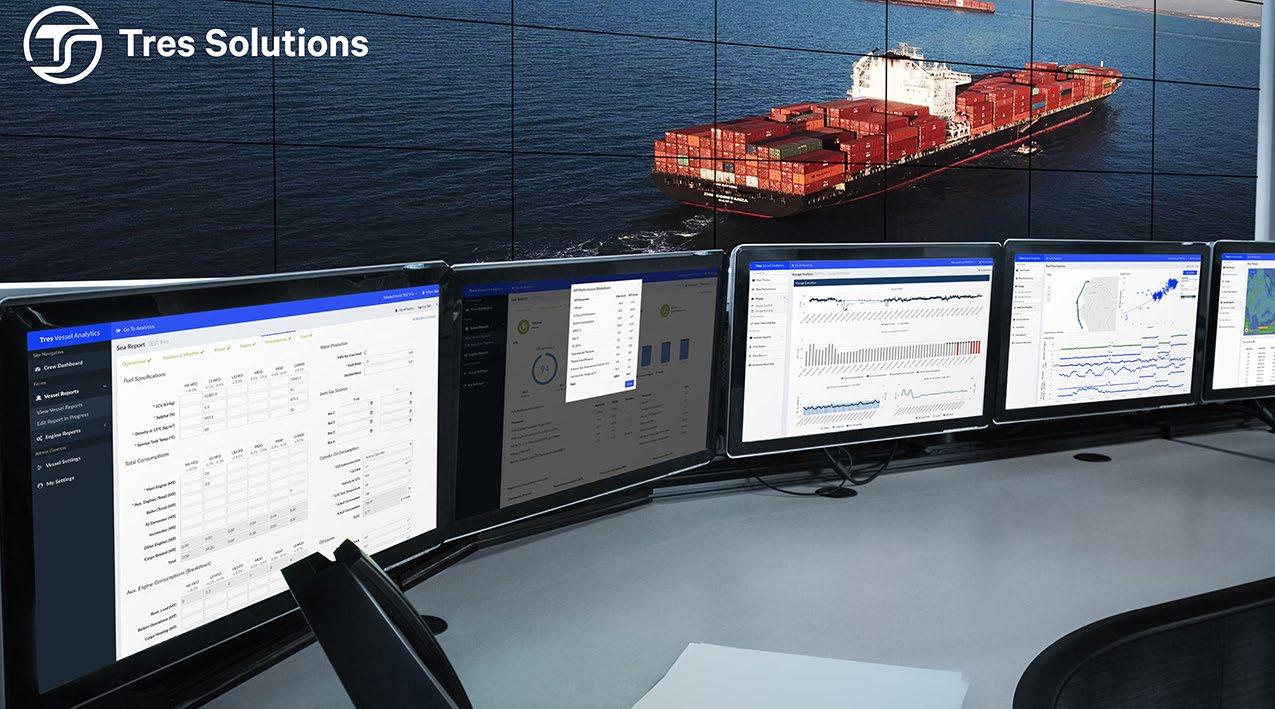
Tres Solutions Houston control room
company the financial backing to take business development to the next level.
Through its NavBox — a GPS and AIS solution, the company was tracking 150,000 vessels at any one time and claimed to have the world’s most updated database. Svanes and his team then asked themselves: what do we do with it?
By having the backing of a large investor, NAVTOR was able to look to extend its service offering into vessel analytics and performance optimisation. Some six months later, NAVTOR acquired Tres Solutions, which gave it access to a team of naval architects and marine engineers.
This purchase followed hot on the heels of the launch of NavFleet in February this year. This fleet management application delivers real-time operational insight, performance optimisation and enhanced business decision making and was launched after several tests with leading shipowners.
Tres Solutions’ core expertise and digital products will be integrated into NAVTOR’s offering, creating a unified platform to help shipowners and operators enhance operations and achieve competitive advantage.
The acquisition gives NAVTOR a holistic performance optimisation tool, including operationally and environmentally, driving a return on investment through fuel savings, resulting in emissions control.
A unique blueprint of each vessel can be built up for use by owners, charterers and managers by using software and analytics. The system can be fitted to third party software systems by a “plug and play” solution.
Svanes explains: “Vessel performance optimisation is an obvious next step for NAVTOR, by utilising our cyber secure, seamlessly connected and cloud-based e-navigation ecosystem as a platform to enable real-time data sharing, analytics and enhanced decision making.
“The launch of NavFleet gives our customers a unique shoreside tool for better fleet management, and the addition of Tres Solutions’ expertise and software delivers the power to generate optimal value — taking performance data and extracting the intelligence needed to enable smarter, more profitable, and efficient operations,” he says.
A single integrated system can now be offered using NAVTOR’s NavFleet and NavStation systems linked to the onboard computer system. Svanes describes it as a modular approach as it starts with a solution and then adds to it as needed.
NavFleet integrates real-time data from vessels, fleets, offices and other sources within a single, user-friendly, shoreside application. NavFleet’s manager, Arild Risholm Saether, explains that the crew are able to take charge, but the system can be overridden by the shore team.
In addition, the port of another organisation can get access to the data, which can be configured for different types of ships and whether using 2-stroke or 4-stroke engines as a prime mover.
Saether explains that the system has two key advantages: 1) Dual validation — collecting ship data from the trials and by using the general arrangement drawings. 2) Analysing the charterparty requirements — position, fuel consumption of main engine and auxiliaries, speed, weather related issues, the type of machinery and fuel on board, machinery running hours.
Performance optimisation is a key NavFleet selling point, with the ability
to benchmark, troubleshoot, refine and share best practices across fleets, while solving individual vessel issues.
For example, if a shoreside team knew what rpm should produce a speed of 10 knots in good weather conditions, vessel engines could be set accordingly and ongoing speed monitored. If the speed doesn’t meet expectations, a hull performance issue could be identified, such as bio-fouling producing frictional drag, hampering performance and impacting on fuel consumption and efficiency.
Svanes says that is just the tip of the iceberg, as NavFleet also enables easier compliance, alongside simplified reporting and administration, with the ability to automate key reports. Among these will be the mandated EU MRV/IMO DCS reports, which can be produced at the touch of a NavFleet button later this year.
In addition, a new approach to operational report handling will allow reports (for example noon reports) to be sent directly from vessels, but accessed from anywhere through the application.
NavFleet’s real-time monitoring capabilities will also help shore-based management determine if vessels are falling short of KPIs or deviating from passage plans, facilitating swift remedial action. The company says that this will make it easier for owners to adhere to charterparty clause agreements, potentially avoiding performance claims.
Svanes says “We’ve listened to our customers and the officers on the thousands of vessels we deliver services to and tailored a solution that helps them tackle some of their most pressing everyday challenges. NavFleet is powerful, flexible and will constantly evolve as we develop new functionality and refinements to meet the changing demands of this dynamic industry.
Speaking about the Tres acquisition, Svanes says: “Performance optimisation is key to a more sustainable business future, so it’s a natural progression. We’ve been impressed by the Tres team and their development for some time and now look forward to bringing an expanded suite of navigation and vessel analytics solutions to the market.”
Aaron Holton, Tres President & CEO, comments: “Shipping companies are increasingly looking for a total ship operations platform, helping them simplify workflows, improve the speed and reliability of their operations, and facilitate better decision-making. In joining the NAVTOR family, our combined businesses will offer a unique full-suite platform, giving users one powerful source of truth for their fleet operations and analytics. We see this as a very exciting step forward.”
By using the NavBox, data can be streamed every 15 minutes if necessary for analyses. This tool can be plugged into the bridge consoles.
As the charterers tend to be responsible for the fuel bill, there is a need for data transparency, which is challenging. “We are trying to remove the veil between the charterers and owners,” Svanes says.
For the past 12-18 months, charterers have become more discerning, illustrated by the setting up of Sea Cargo Charters. They also now need solutions to better manage environmental efficiency.
In areas such as route planning and weather analysis, discussions between owners, managers and charterers is becoming more important.
NAVTOR’s Chief Commercial Officer Borge Hetland explains that there are no issues with compressed data transfer from ship to shore, as most of the market relies on HTML or Excel formats.
Not stopping there, NAVTOR has continued its evolution with the launch of a new operation in Denmark. NAVTOR Denmark opened its doors with Managing Director Jacob Clausen at the helm. Clausen and his team will focus on creating awareness of digital solutions that deliver enhanced efficiency, safety, simplicity and performance to shipowners and operators within this key maritime market.
Clausen was formerly Vice President Operations at Tres Solutions, and held executive positions at Marorka and Maersk Maritime Technology, among others. He recently recruited Dennis Ingham, formerly of FORCE Technology, as Senior Data Analyst and will expand the team further in the coming months.

Tor Svanes, Founder and CEO of NAVTOR
MIROS MOCEAN UNVEILED
NAVTOR is not the only company to address vessel performance, as BW Group and Miros have formed a joint venture called Miros Mocean.
Miros Ocean will provide vessel performance optimisation with regards to accurate real time weather and currents data.
There has been a lack of reliable performance data in actual operating conditions leading to questionable data and built-in tolerances in today’s charterparties, the companies claim.
A lack of vessel speed control accuracy and a lack of accurate weather data are the largest known factors contributing to sub-optimal vessel performance, leading to excess fuel oil consumption and CO2 emissions.
BW Group’s own experience with Miros’ technology underpins the joint venture, following more than a year of joint development, the company says.
“To be able to understand if an investment is truly optimising the performance of your vessel, you need to account for weather,” explains Christian Bonfils, Managing Director, BW Dry Cargo.
“The technology Miros Mocean introduces is what we at BW Group had been looking for. It gives access
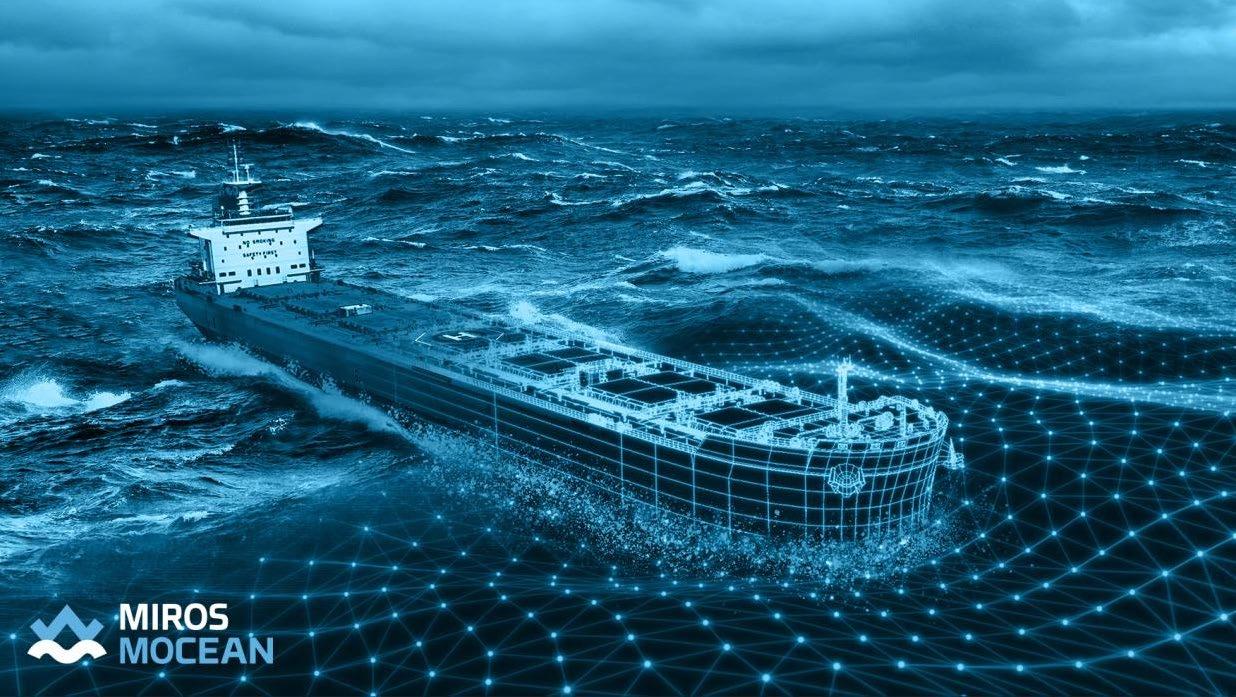
Miros Mocean will cover the whole ship’s performance
to accurate speed through water and weather data at the precise ship location and combined with fuel flow and main engine power meters, we can quantify fuel savings of up to 10% on a single voyage. It has also helped to change the legal contracts to actual performance instead of warranties, setting the standard for the future of this industry,” he claims.
Miros Mocean combines fuel oil consumption and main engine power measurements with real-time accurate environmental conditions at the vessel’s actual location. This allows vessel owners and operators to: » Make real-time decisions about the operation of vessels with the objective of saving fuel and reducing greenhouse gas emissions. » Integrate highly accurate weather data into their existing vessel performance systems for further performance enhancements. » Optimise charterparty contracts by using the measured performance of a vessel rather than warranties. The new system provides real-time decision support for the enablement of performance optimisation, fuel savings, reduced carbon emissions and documentation of true weather conditions to remove uncertainty from charterparty warranties.
By measuring a vessel’s speed through water with unprecedented accuracy, the output (transport efficiency) of a vessel can finally be measured at a given input of fuel, load, weather, and so on. Without accurate speed through water, it is not possible to accurately describe the performance of a vessel, the companies said.
Instead of using traditional underwater instrumentation, the speed through water can now be measured by the patented Miros Wavex, which is based on X-band radar images. This solution can provide measurements with high accuracy, with no need for any equipment to be installed or maintained underwater.
Speed through water can be measured using radar images covering local areas of interest, at a reasonable distance from any disturbing structures, including the vessel’s hull. The instrumentation can be connected to an already existing X-band radar or to a dedicated set.
The data is collected via a Miros Edge computer on board the vessel and transferred securely to Miros Cloud. There the data is stored and archived where it can be processed and analysed to gain further insight.
There are also a number of applications to help customers with decision making, which can be accessed from a web browser and can provide insight into both real-time and historical vessel performance. An application is also available to specifically compare the actual vessel’s performance with the charterparty warranties.
The data can be downloaded easily, or transferred to a third-party vessel performance system on board or ashore.
Considering vessel fuel optimisation, speed through water data input can be used to operate a vessel at the lowest total cost. Having data with an accuracy of a few centimetres per second rather than, for example, one metre per second, can make a big difference. For example, it can mean a decreased daily fuel consumption of tens of tonnes for a single ship, the companies say.
At a presentation, Miros CEO Andreas Brekke explained that the coming together was a sixmonth project. It started from the premiss that the ship had already been digitalised.”We are looking to add the missing piece by means of digitalising the ocean, detailing in real time the wave parameters, ocean surface currents and true speed through the water,” he said.
Describing the application for charterparties, he explained that a warranty of 12 knots at 16.9 tonnes of fuel per day only applied in good weather. The software is colour coded to enable the user to determine if the vessel is within the warranty stipulated.
There will soon be two main products. The first is already available and gives digitalised sea data, fuel consumption and power to manage charterparty warranties and performance. The second is still under development, but will include normalised vessel performance in measured weather and speed through water with very accurate data.
Miros Mocean is currently working with a classification society on how to deliver and store the data and verify the accuracy of fuel savings devices, coatings, and so on. This will give an accurate emissions recording, which can be sent to the relevant authorities and is tamper proof.
The core platform can be integrated with other shipboard performance systems. The company claims that between 8-10% in fuel savings can be achieved on a transpacific voyage at certain speeds. “We need to know the speed through the water to calculate the specific fuel consumption and emissions reduction. We are working on it, “ Brekke said, adding that a wind speed of at least 2 m/s is needed, but the speed is mostly much higher. Mirror sea conditions are rare today.
Miros Ocean is collaborating with forecasting modellers and the system is integrated with Microsoft to ensure the information is encrypted. It is a subscription-based service, which can be split into layers. AOT FUNDING SUCCESS
Another initiative saw Alpha Ori Technologies (AOT) secure $6m funding from shipowners Hafnia and BW LPG, and Mikael Skov, Hafnia CEO, join the AOT board.
The money will allow AOT to expand its products and invest in future technologies to add to its SMARTShip, SMARTVoyager, ShipPalm and VIO.
AOT claimed it was transforming the maritime industry by replacing disjointed analogue systems with smart digital enterprises. It had surpassed its target of 100 SMARTShip deployments by the end of last year.
Anders Onarheim, BW LPG CEO, says: “BW LPG is pleased to be among the earliest adopters of SMARTShip technology in our journey to digitalise our fleet. Over the years with Alpha Ori as our partner, we benefit from improved fleet management as we build real-time, transparent and reliable ship-to-shore connections. We look forward to continued growth with Alpha Ori as we progress our digital transformation journey.”
Skov comments: “Hafnia is pleased to now be an investor in Alpha Ori. Our work together thus far has empowered Hafnia to make decisions based on real-time and accurate data analytics. Alpha Ori helps us rest assured that we are actually making progress towards improving performance and reducing impact on the environment. SMARTShip also ensures that any company is ready for all future environmental reporting requirements. I look forward to further strengthening our partnership and performance through this new investment and my participation on the Alpha Ori board of directors.”
Rajesh Unni, AOT’s Founder and Co-CEO, adds: “Challenging the status quo and creating opportunities that have the power to transform the maritime industry by embracing new technologies have been the defining objectives of Alpha Ori. We are thrilled with the support of our investors who bring in their capital, knowledge and network to further our vision.”
Sanjeev Namath, AOT’s Chief Business Officer, tells Clean Shipping International that both Hafnia and BW LPG are currently clients of the company’s SMARTShip solutions and have realised the value out of using the solution.
“Hence, this can be considered as a vote of confidence or rather a safe bet investment,” he says. “This funding will help us not only develop niche AI based solutions but also help us scale that much faster by investing in futuristic technologies.”
He continues: “It is a shame that the industry is yet to realise the value real-time data analytics can provide towards improving the operational efficiency and reducing the risks that have huge consequences such as the Wakashio or even the Ever Given incidents.
“Communication bandwidth was a huge bottleneck four years ago, but this is being eased up progressively and as things stands now is not a deterrent towards digitalisation,” he says.
Namath explains that one of the key differentiating factors of the solution is that edge applications are provided to augment the crew capabilities.
Crew are still the first line of defence when it comes to incident/accident prevention and by providing decision support to the crew basis real time analytics, the ship’s operations safety and reliability can be improved, as well as achieve higher operational efficiency by prompt interventions based upon the AI-based intelligence provided to the crew.
In February, AOT announced that it had signed a contract to supply 40 SMARTShip systems to Bahri Ship Management.
The platform provides a “live connect” experience by connecting to all the ship’s machineries — navigation, cargo and engine control systems.
With 3K to 5K data points flowing at 30 second intervals directly from the machineries to the AOT’s Cloud, SMARTShip uses machine learning algorithms to bring the power of AI in vessel management, fuel savings and predictive maintenance, AOT says.
The Bahri contract was finalised following the completion of a threemonth trial on one of Bahri’s VLCCs.
PORT AND TERMINAL OPERATIONS FOR BULK CARGOES – Short Course
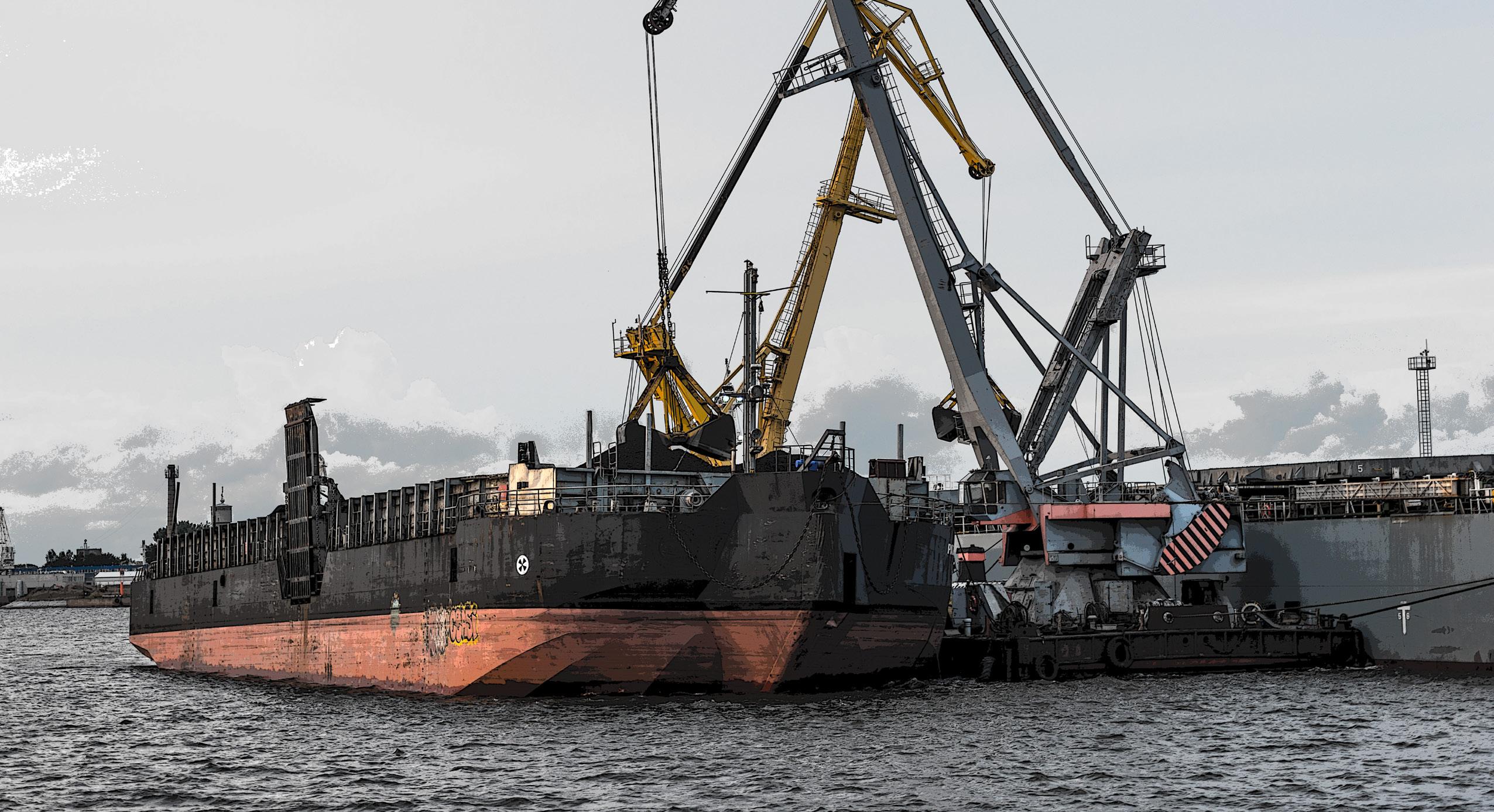
For anyone concerned about or responsible for the safe handling For anyone concerned about or on-line delivery - call to arrange an in-company course and storage of bulk materials in responsible for the safe handling Subjects covered include: » Ship unloading technologies » Conveying technologies » Storage and discharge technologies ports and on the sea Course Leader: Mike Bradley, Professor of Bulk and Particulate Technologies and Director of The Wolfson Centre, University of and storage of bulk materials in ports and on the sea Course Leader: Mike Bradley, Professor of Bulk and Particulate Technologies and » Loading and unloading control GreenwichDirector of The Wolfson Centre, » Rail and road out loading University of Greenwich equipment and control » Explosion and fire risks and management » Mobile plant and safety » Developments in automation and autonomous vehicles » Dust control and environmental protection » Controlling cargo damage » Wear protection and maintenance » Cargo characterisation for handleability and other issues
Next open course – March 2022
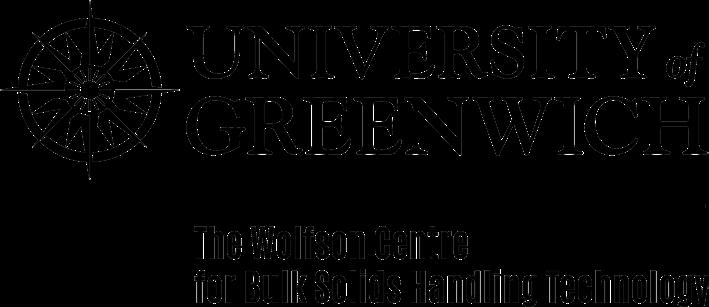
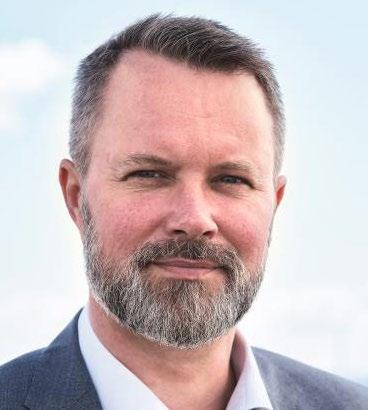
ALFA LAVAL INVESTS
One company not frightened of investing to improve its maritime offering is Alfa Laval.
The Swedish Group has recently agreed to buy StormGeo, a producer of weather intelligence software and decision support services.
The purchase price quoted was about NOK3,630m on a debt and cashfree basis. Closing is expected during 2Q21, subject to customary conditions.
Once the deal goes through, StormGeo will become part of Alfa Laval’s Marine Business Division.
“The acquisition of StormGeo will be a strong addition to our toolbox of solutions that help our customers address the de-carbonisation challenge in the industry,” says Tom Erixon, Alfa Laval President and CEO. “Furthermore, StormGeo fits excellently to our digital acceleration ambition and we will use its digital and customer experience to level up our offerings and to get deeper experience in the digital space.”
“Joining Alfa Laval, a world-leading industrial owner, benefits StormGeo by developing our business through increased geographic and technological expansion,” says Søren Andersen, StormGeo CEO. “By investing even more into developing leading software and SaaS products, we enable our customers to improve efficiency and reduce their carbon emissions while keeping their people, assets and operations safe from increasingly extreme weather.”
Private equity company EQT invested in StormGeo in 2014 and during its ownership, StormGeo’s market and product positions were strengthened through digitalisation and investments in six acquisitions, doubling customers, revenues and EBITDA.
NAPA’S UNIQUE POSITION
As a solution provider for vessel desig, and with access to a wealth of real time and past voyage data, NAPA is uniquely positioned to provide shipowners and operators with advanced data analysis, says Ossi Mettälä, NAPA’s Customer Success Manager.
Speaking to Clean Shipping International, he says that NAPA is currently the only provider to combine hydrodynamic modelling, based on decades of expertise in ship design software, with big data analysis.
“NAPA sees its role as fundamental in increasing the benchmark for efficiency standards in the maritime sector, with its cloud-based ship performance monitoring platform, NAPA Fleet Intelligence, integrating voyage monitoring, reporting, analysis and optimisation into one platform.
“The unique combination of hydrodynamic calculations, bathymetry data, weather and environmental monitoring, AIS and noon reports, creates an accurate 360 deg analysis. This information can then be applied by those operating vessels out at sea to secure efficiency gains,” he explains.
He also claims that NAPA is taking monitoring operational efficiency to another level. The application of NAPA Fleet Intelligence extends to shipowners, operators and shipyards alike.
“With emission reduction targets fast approaching, the application of real-life operational data to improve current voyage performance and future vessel design, will be critical to increasing the efficiency of the global fleet,” he stresses.
Given the rush towards alternative fuels, will real time data become even more important to gauge a vessel’s actual performance? “Yes,” he says, adding that the maritime industry is currently under-utilising real-time data to improve vessel and voyage performance, with most vessels sticking to a default route, except in extreme weather conditions.
“This means the benefits of optimised routeing are not actualised, as voyages that could consider upto-date weather conditions currently fail to do so. Alongside factors such as speed profiling, vessel-specific characteristics and Emission Control Areas, real-time changing conditions, such as ocean currents, arrival time and wind to name a few, must also be combined to secure the safest, most efficient, and cost-effective route.
“Greater control and the ability to record influencing factors affecting each voyage would enable us to understand a vessel’s actual performance,” he says.
With alternative fuels costlier than HSFOs, with a scrubber, the argument for optimisation technologies to increase fuel efficiency not only extends to environmental compliance but is important in maintaining economic viability in a competitive market, he adds.
NAPA is a champion of the fully integrated approach to data which Mettälä said was at the core of the company’s software creation and development.
“By marrying vessel and voyage optimisation from the design phase through to everyday performance data, we aim to integrate all possible factors impacting voyage performance to ensure the highest levels of safety, efficiency and profitability.
“Most importantly, from cruise industry leaders to smaller ship owners, solutions such as this must be scalable and affordable for everyone in the industry to be effective. This is why we offer different levels of NAPA solutions to ensure everyone is able to access an effective and truly holistic overview of performance, without having to outsource to different providers,” he says.
Furthermore, voyage data analysis and consequent implementation of actions should be a collaborative process. The solution providers should provide the tools, expertise and software to enable all key stakeholders within a shipmanagement team to conduct a thorough analysis, which can then inform decisions made on routing, for example, he concludes.










